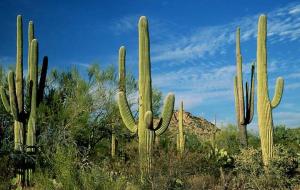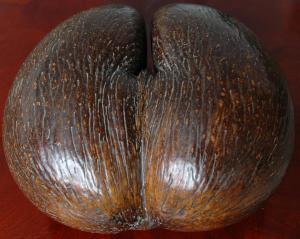Carrion Plants January 31, 2010
Posted by woodtree0587 in Plants/Civilizations.add a comment
Common names: Carrion Plant, Carrion Flower, Starfish Flower
Scientific name: Stapelia species
Explanation of scientific name:
Stapelia – named for J.B.VanStapel, a 16th century Dutch physician
There are 90 species of Carrion Plants that belong to the genus Stapelia. Stapelias, in turn, belong to the plant family Asclepiadaceae (the Milkweed family – named after Asclepias, the common milkweeds).
Native to South Africa, the Stapelias are stem succulents with thick, fleshy, soft, 4-sided stems that are leafless except for some minute scaly bristles. Carrion Plants bear a superficial resemblance to cacti, but are botanically unrelated because of their different floral anatomy. Cacti, incidentally, are native only to the American continents. Stapelias and cacti look quite alike, however, since they evolved over millions of years in similar desert-like environments. They faced the same environmental challenges, and developed adaptations to cope with them. Both groups can withstand long periods of drought because of their ability to store water in their stems. When two unrelated species evolve to appear so similar, biologists label the phenomenon “convergent evolution”.
Probably the most interesting feature of the Carrion Plants is the flower structure. Ranging in size from a fraction of an inch to over 12 inches across, the flowers are 5 – pointed and resemble the starfish of the sea. This resemblance has led to the use of the common name Starfish Flower. The flowers are not pollinated in the usual ways, such as by bees or wind. Instead, flies are the exclusive pollinators. In an effort to attract the flies, Carrion Plants have evolved to produce flowers with properties quite attractive to flies. The odor emitted from these flowers is strong and fetid, resembling that which would come from a decaying animal carcass. In addition to the rank odor, the colors of Stapelia flowers are shades of purple-brown and yellow with striations (bars) of darker colors. This gives the impression of exposed flesh. The fine hairs that cover the surface of the flowers further enhance the resemblance to carrion. Therefore the name Carrion plant fits it very well.
The odor of the plant isn’t apparent until a flower is blooming. If there is a flower blooming then it’s a grantee you will be able to smell it.
Unique Plants 2 April 27, 2009
Posted by woodtree0587 in Plants/Civilizations.5 comments
5. Indian Pipe (Monotropa uniflora)
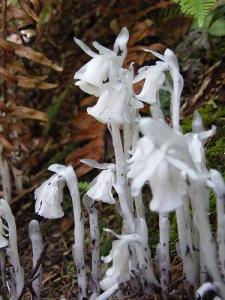
Not all plants gain nutrition from the sun, in one particular case the Indian Pipe plant, all so known as Ghost Plant, obtains its nutrients from decaying matter in the soil. The Indian Pipe is a smooth, leafless, waxy herbaceous plant and is colorless because it has no chlorophyll. It obtains a black color once it is fully mature and unfortunately I have not been able to find a picture of a mature plant, but it is generally rare to find.
6. Saguaro Cactus (Carnegiea gigantea)
Native to the South Western United States (mainly Arizona and New Mexico) and it lives in the dessert areas. The way this cactus survives is during the brief rain storms that happen about once every 6 to 8 months the plant opens it’s stomata (allows for water and air movement) and basically sucks up the rain and in one rain storm the cactus can hold up to 8 tons of water in its roots and body.
7. Coco de Mer (Lodoicea maldivica)
This is the largest seed in the world and it can get up to if not larger than 20 inches in long. This seed is considered a nut and it is protected by the Seychelles government.
Unique Plants Part 1 April 22, 2009
Posted by woodtree0587 in Plants/Civilizations.1 comment so far
I have already talked about the interesting carnivorous plants, so I’m not going to mention them anymore. But here are a few very interesting plants, that I think have extremely cool adaptations.
Starting first with the Resurrection Fern (Selaginella lepidophyll):
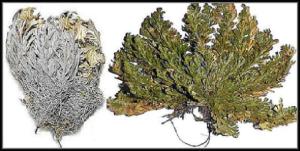
The Resurrection Fern lives in very dry climates. So when there is not enough rain it actually shrivels up and looks dead, but when it finally rains it brightens right back up and is as green as the greenest plant. It also grows and gets bigger, so that is why every time people look at it; it always seems bigger. If it runs out of water then it shrivels up and forms a ball once again; so it is never really “dead” but it look dead.
Number 2 is the Strangler Fig (Ficus):
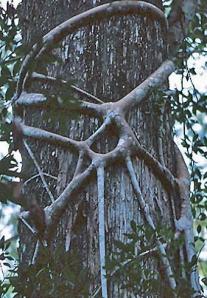
Ficus seeds will actually germinate in a tree and them form roots that will eventually wrap around the tree. The roots are considered adventitious and grow out of nodes in the “stem” and then act like vines growing and also clinging to the trunk and then reach the soil. Every year the roots get larger in diameter, which also makes them harder to break by the tree (as it also grows in diameter), eventually allowing it to encircle the tree. Thus, allowing the Ficus to eventually strangle the plant (normally trees) of which it is growing on.
Number 3 and 4 is the Corpes Lily and the Stapelia:
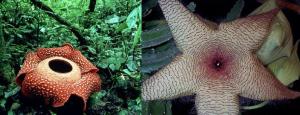
First of the Corpes Lily is one of the largest flowers in the world and it stinks like a rotting animal, which is why it’s called the Corps Lily. The Stapelia is defiantly one of the largest flowers in the world and it’s flower smells like rotting meat.
St. Johnswort April 18, 2009
Posted by woodtree0587 in Plants/Civilizations.1 comment so far
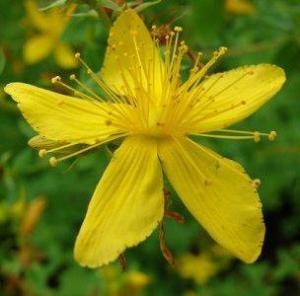
For about 2400 years, St. Johnswort had been used for many different purposes thought-out history. St. Johnswort is a perennial shrub that produces abundant yellow flowers that is native to Europe and North Africa. The early Christians converted this plant as a symbol of St. John the Baptist because this plant blooms around June 24 which is St. John’s Day. The Greeks thought that it chased away spirits then the Christians decided that it was God-related and should have a name of a holy person.
St. Johnswort was brought to the United States in 1696 as a medicinal, ornamental and “magical” plant. It is now grown naturally throughout most of the world. You can find it specifically in northern California, southern Oregon and Colorado.
St. Johnswort has become one of the most popular herbal remedies for several different medical uses. This plant has been used for centuries to treat mental disorders and nerve pain. Back in ancient days herbalists used it as a sedative and a treatment for malaria. It is also used as balm for wounds, burns and insect bites. Today we have discovered several new uses that we use for depression, anxiety and sleep disorders. There has also been some research that shows that there are some antiviral compounds that may be useful in the treatment of AIDS. It is still commonly used as a painkiller for relieving arthritis pain and menstrual cramping, and relief for gastrointestinal problems such as diarrhea, nausea and ulcers.
As with any herbal use there are side effects and cautions for children and elderly. St. Johnswort is not recommended for children unless under physician care. Women who are pregnant or currently lactating, patients with bi-polar or are considered as manic-depressive should not take this drug. It can cause photosensitivity, anxiety, dry mouth, dizziness, gastrointestinal symptoms, fatigue, headache or sexual dysfunction. Other affects can be disorientation and speech difficulty, rigidity of neck muscles or contractions of other muscles, pupil dilation, sudden rise in blood pressure and palpitations, severe sweating and high fever.
Flowers in Christianity April 16, 2009
Posted by woodtree0587 in Plants/Civilizations, Uncategorized.4 comments
Flowers can mean different things in different contexts: in religion particularly. For the early Christians, flowers were regarded with great suspicion and associated them with decadent pagans. In Islam, the beauty of each flower is a symbol of God’s spirit. During the Middle Ages, the Christians appreciated the beauty of nature and regarded this as proof that God created the world. In America, church-goers would sniff fennel to help keep them awake during the long sermons. For thousands of years, art and speech were used in culture and religion through flowers. Flowers are also used in many different Christian holidays such as Christmas and Easter.
From the second century, sexual intercourse was considered a “sin” by the Christian church, but animals had no souls so their sex was ok since people needed more animals to survive, especially domesticated ones. Plants were considered the only “pure” life form on earth because people said that they did not have sex. If plants did have sex, then people said that the church teachings were wrong. So, this is when Christian theologies denied that plants ever had sex. Later, the Christians accepted that plants had sex and that it was not that big of deal.
In the five main religions, flowers and plants mean different occasions and spiritual things. The main five religions of the world are Christianity, Hinduism, Islam, Buddhism, and Chinese religions. Each religion has a main flower that they associate with their religion. In the Islam religion, there is no one flower that they associate with their religion. The lotus is the main flower that is associated with the Buddhist religion. In Chinese religions white flowers, Peonies, Orchids, Lotus and Daffodils and a few others are associated with this religion. In the Christian religion, many flowers have a lot of symbolism and representation to the religion and the people of the world. The passion flower, the white lily, the archetypal flower, the pomegranate, and the
The main flower that means a lot in the Christian religion is the passion flower. This flower is mainly a symbol of Jesus’ scourging, crowning with thorns and crucifixion. Every part of this flower has some type of meaning. The spiraled tendrils symbolize the lash of Christ’s scourging. The central flower column is a symbol of the pillar of the Scourging. The 72 radial filaments is a symbol of the Crown of Thorns. The top three stigmas symbolize the three nails. The lower five anthers symbolize the five wounds. The Style represents the Sponge used to moisten Christ’s lips with vinegar. The leaves and some species represent the head of the Centurion’s Spear. The red stains represent Christ’s blood drops. The round fruit represents the world Christ came to save. The Fragrance symbolizes the spices prepared by the Holy women. This flower gives specific reasons and visualizations to the Christian faith. It provides a visual meaning to the teachings of the Gospel story and the eras where there were no printed catechisms. The passion flower has a number of symbols found in flowers individually other religions and traditions (John S. Strokes Jr.).
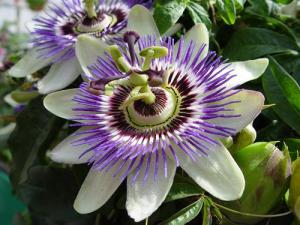
The archetypal flower is a symbol of the Christian religion. The archetypal flower symbolizes the purity and is associated with the Virgin Mary. The white pedals represents that she was pure and had a clean body. When seeing an angel or in a vase on the ground of a scene, there you will usually be a white lily placed in the picture. In devotional paintings of the Virgin and the Child with saints, there are usually lilies and other flowers placed in the pictures. Other white flowers including: lily-of-the-valley, leucojum, snowdrops, or white flowers with golden centers like roses and daisies can also reflect this meaning as well (Flowers and Religion). These white flowers keep a sacred meaning to purity and the Virgin Mary.
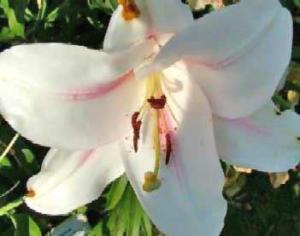
Another flower that has a specific meaning is the pomegranate. The pomegranate symbolizes the resurrection and the hope of eternal life (Pomegranate). This is because of the abundance of seeds (pomegranate.) Another symbol is of royalty and the church and the seeds would represent the believers in the church (pomegranate.) In pomegranates, the seeds are bursting out and this symbolizes Christ bursting out of the tomb (Frosted Skies). The pomegranate is a significant symbol of hope and resurrection in the Christian religion.
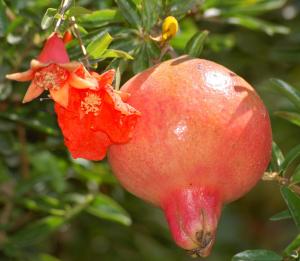
As in many other religions, the rose is a symbol in the Christian religion. Roses have been as symbol of the Virgin. Catholics use rosaries that symbolize and indicate the separate prayers as tiny roses. Roses in nature are really small five petal flowers and come in an array of colors. Representing Christ’s wounds is the white rose with its five petals and the white color representing Christ’s purity and the red rose represents Christ’s sacrificial blood (Flowers and Religion). The red rose also is the symbol of love.
Flowers are important to many religions of this world, particularly as I mentions for Christianity. The passion flower has several different meanings to Christianity. The archetypal flower is a symbol of the Virgin Mary and purity. Roses represent the prayers, wounds and sacrificial blood that Christ shed for us. Flowers in general are symbols of life and are used to decorate. Without flowers, Christians would not have much to remind them of what Christ did and the promises that he made.
Mandrakes: Histories, myths, and legends April 6, 2009
Posted by woodtree0587 in Plants/Civilizations.add a comment
How’s this for you, your reading or watching the first Harry Potter book/movie and Hermione Granger does her famous drawl about the Mandrake. Is this starting to perk a few ears? Jog a few memories? Now the next question is how many of you thought that the Mandrake was a fictional plant thought up in the minds of writers and poets?
Well to tell the truth the Mandrake is real and it is the common name for members of the plant genus Mandragora, which belongs to the Solanaceae or Nightshades family. The Nightshades family is full or plants that are mainly thought and definitely does have the properties to be “poisonous and deadly” BUT, many are not to the point of being completely deadly, such as the common potatoes that many of us eat on a regular basis (potatoes are not in the Mandragora genus).
The mandrake Mandragora officinarum has parsley-shaped roots that are often branched. The root gives off at the surface of the ground a rosette of ovate-oblong to ovate shaped, 5 to 40 centimeter (2 to 16 inches) long leaves, which somewhat resemble tobacco leaves. It also gives of many single flowers that nod on a peduncle from the neck that are whitish-green and almost 3 inches (5 centimeters) broad. These produce globular, succulent, and orange to red berries that look like small tomatoes. All parts of this plant are poisonous and they grow natively in southern and central Europe and in land around the Mediterranean Sea, as well as on Corsica. In Arabic it is called luffâh, or beid el-jinn “djinn’s eggs”.
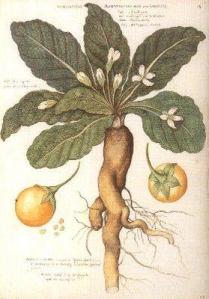
Anyhow back to the Mandragora genus, these species do contain deliriant hallucinogenic tropane alkaloids, such as hyosyamine (a secondary metabolite found in members of the Solanaceae family that is used as a secondary growth compound, which actually inhibits growth of the plants) and the roots contain bifurcations causing them to resemble human figures.
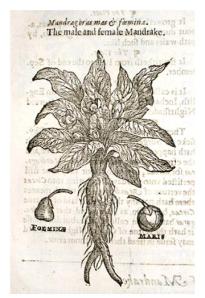
The roots have long been used in religions such as Wicca and Germanic religions such as Odinism. It is also mentioned in the Hebrew Bible in Bereshit 30: 14 – 16:
In Bereshit 30, Reuben, the eldest son of Jacob and Leah finds mandrakes in a field. Rachel, Jacob’s infertile second wife and Leah’s sister, is desirous of the mandrakes and barters with Leah for them. The trade offered by Rachel is for Leah to spend the next night in Jacob’s bed in exchange of Leah’s mandrakes. Leah gives away the plant to her barren sister, but soon after this (Bereshit 30:17-22), Leah, who had previously had four sons but had been infertile for a long while, became pregnant once more and in time gave birth to two more sons, Issachar and Zebulun, and a daughter, Dinah. Only years after this episode of her asking for the mandrakes did Rachel manage to get pregnant. There are classical Jewish commentaries which suggest that mandrakes help barren women to conceive children. Mandrake in Hebrew means “love plant” and is believed by many cultures that Mandragora officinarum is the mandrake of the biblical times.
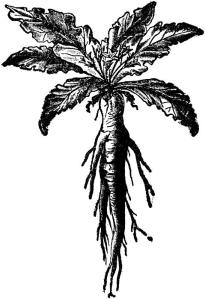
It is also said that musicians and those that participate(d) in witch craft also used this plant to twist and contort into a crude visual of a human being, by pinching or constricting just below the top so that is looked like a head and neck, and then they would twist off all the upper branches except two which would look like arms, and then they would two of the lower branches to make them look like legs.
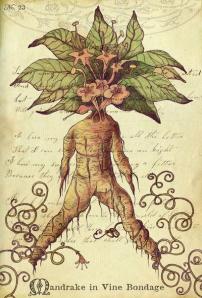
It has long been rumored that when the roots of the mandrake is dug up it screams and is deadly to anyone who hears it without protection (hence why in Harry Potter the kids had to wear protective ear muffs). There is great bouts of literature that includes complex directions for harvesting mandrake roots in relative safety. A rather humorous extract from Josephus (who lived around 37 AD in Jerusalem) states that:
“A furrow must be dug around the root until its lower part is exposed, then a dog is tied to it, after which the person tying the dog must get away. The dog then endeavors to follow him, and so easily pulls up the root, but dies suddenly instead of his master. After this the root can be handled without fear.”
Another interesting common belief in some countries is that a mandrake would grow where the semen of a hanged man dripped on to the earth. This appears to be the reason why alchemists “projected human seed into animal earth”. In Germany, the plant is known as the Alraune: the novel (later adapted as a film) Alraune by Hanns Heinz Ewers is based around a soulless woman conceived from a hanged man’s semen, the title referring to this myth of the Mandrake’s origins.
So to say the least there is a whole lot more information on mandrakes that has to do with many different cultures, religions, and magical myths.
Christmas Time Plants February 17, 2009
Posted by woodtree0587 in Plants/Civilizations.1 comment so far
The Christmas cactus has always been a magical like plant to the western civilizations when it was discovered in South America is the early 1800’s.
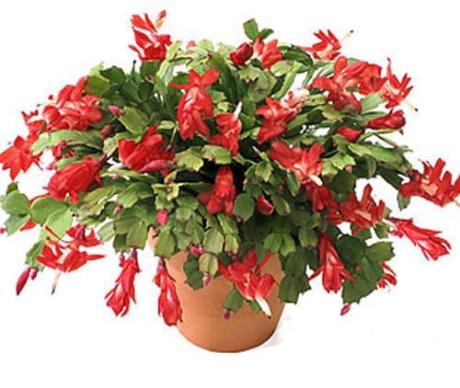
Why the Christmas cactus is called the Christmas cactus?
Something I have always wondered about because it is a cactus, but not in the traditional sense and it seems to me that it is not a plant that is normally associated with the Christmas and winter Holidays. It is really a tropical plant from the Latin American rainforests and is widely available in Brazil. The plant drives from the Cactaceae family and its scientific name is Schlumbergera bridesii. According to Christmascarnivals.com the name came from a 19th century Frenchman named Fredric Schlumberger (hence the genus name Schlumbergera) who collected the cacti and saw that it blooms around Christmas time. Due to much hybridization of the plant the horticulture industry has been able to create the many different colors of the blossoms ranging from dark magenta to bright white. The colors of the blossoms have been given many different meanings much like roses and how a bouquet of all red roses means “I love you” and a bouquet of red and white roses means “unity.” The leaves of the cactus are flattened almost stem like with deep notches making it appear as if the leaf had been “glued” together from end to end. The blossoms also look almost orchid like, which brings us back to the fact that it is a cactus but not in the traditional sense.
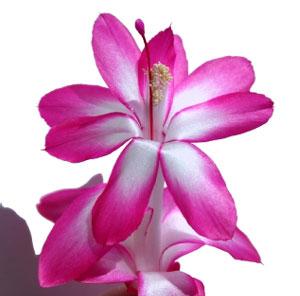
A very pretty flower which doesn’t really look like it should be coming out of a cactus like plant mainly because most of us are more familiar with the great dessert cactus (which also have gorgeous flowers but don’t look like this).
The Christmas cactus is easy to take care of and to grow if you ever feel the need to grow one. All that simply needs to be done is: of watering and a decent amount of warmth and food ever now and then, but in order to get the plants to flower you should give it more light than it is normally used to because the plant can adapt to low light because of its natural habitat, but more light gives it more blooms. But you must be careful to still have some shade because complete direct sun light could scorch the leaves which is something I’m sure no one wants. Mainly make sure to shade the plant during the months of May through September. It needs well drained soils mainly due to the fact that the plant is an epiphyte, which means the plant lives on other objects (mainly other plants) in its natural habitat. But be sure not to mistake the plant for a parasitic plant which not only live on other plants, but steals all its nutrients from its host plant. The plant is not a true cactus and therefore it is not as drought tolerant as dessert cactus and therefore needs supplemental watering, but DO NOT drowned it in water and make sure that soil is able to drain the water out swiftly. DO NOT allow water to stand in a plate or catch bucket at the bottom of a planter. Either poor out the water at the bottom of the planter or use a turkey baster to remove the water (which is the best way to remove water without disturbing the plant).
This is a short history and an easy way to make a long healthy living plant (some of which are over 100 years old).
Another plant that is seen during the late months of the year is the Poinsettia. Many know this name and like to get at least one for the Thanksgiving and Christmas holidays, but what many don’t know is where they come from. Many also know lots of the folklore that comes with these plants, but I am going to make sure that you all know of at least two that are myth.
First off Poinsettias (Euphorbia pulchenima) are native to southern Mexico and Guatemala where they grow as a large shrubs or small trees as seen depicted here:
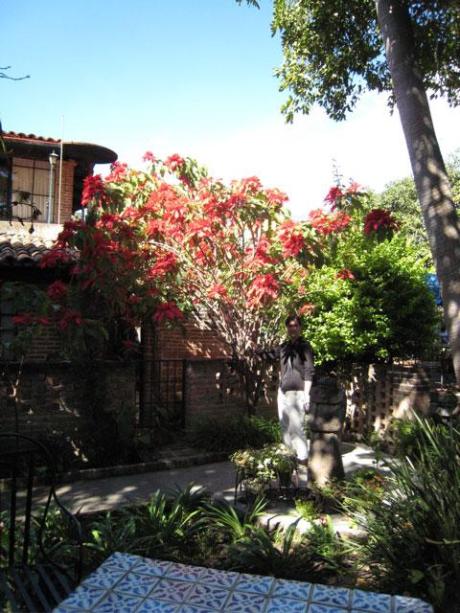
However it wasn’t until the 1930’s when a man named Paul Ecke was able to tame this plant into what we now know as the common Poinsettia bought in our stores. Ecke was born and bred right here in Colorado and is a proud alumni of Colorado State University, as of right now, his grandson Paul Ecke III runs the business and is still a proud breeder of the infamous Poinsettia.
Now to the myths:
1. Are Poinsettias poisonous to humans?
a. Poinsettias are not poisonous to humans, small children if ingested can get a stomach ache and they would have to eat at least 50 bracts in order for that to happen, but that is it. An adult would have to eat up to 300+ bracts for them to receive a stomach ache. If there is any kind of “poison” it would be due to the fact that the “sap” inside to plants is a form of latex, therefore if anyone is “poisoned” it is more likely they have an allergy to latex.
b. However, NEVER ALLOW a cat to ingest any part of the Poinsettia. Poinsettias are poisonous to cats and can cause kidney failure within minutes. NOTE* kidney failure in cats due to Poinsettias, won’t always be in minutes it can take time, so it is always best to take your cat to the Vets as soon as you notice that the cat has ingested the plant.
2. Are the colored parts of Poinsettias the flowers?
a. Again NO, the colored parts of a Poinsettia are not the flowers. They are called bracts, which are like leaves, but not leaves either. They subtend the small yellow middle of the plant which are the flowers.
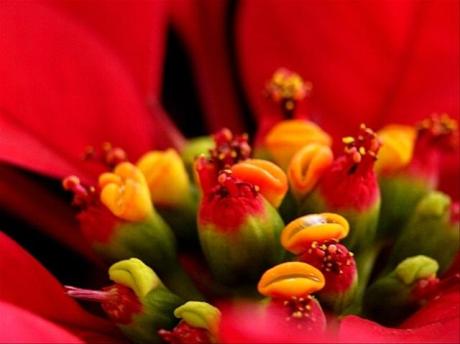
There will be more later on myths about plants and plant pathogens.



